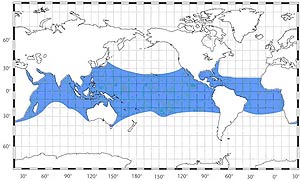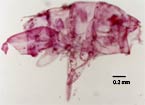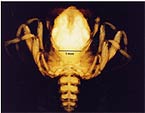| Where are they found?
Whale sharks (Rhincodon typus) have a broad distribution in tropical and warm temperate seas.They are thought to prefer surface sea-water temperatures between 21°–25°C. Sightings at Ningaloo Marine Park (NMP), however, are most common in water temperatures around 27°C.
They are known to live in both deep and shallow coastal waters and the lagoons of coral atolls and reefs. Australia is one of the most reliable locations to find whale sharks. They have been seen in India, the Maldives, South Africa, Belize, Mexico, the Galapagos Islands, Southeast Asia and Indonesia.
Whale sharks are widely distributed in Australian waters. They are most common in Ningaloo Marine Park, but have been seen at Christmas Island, off Queensland and near Eden, New South Wales.
What do they eat?
One of only three filter-feeding sharks (the other two being the basking and megamouth sharks), whale sharks feed on minute organisms including krill, crab larvae, jellyfish etc., and has been known to feed on larger prey such as sardines, anchovies, mackerels, small tunas and squid.
Although they have about 3 000 tiny teeth (each less than 6mm in length), these teeth are not used while feeding. Instead, the whale shark can sieve prey items as small as 1mm through the fine mesh of the gill-rakers. They are able to open their mouth wider than 1m to improve feeding and are occasionally sighted hanging vertically in the water to allow baitfish and other food items to be ‘sucked’ in. |

The whale shark is widely distributed through tropical seas.
(© CSIRO)
 |
 |
Copepods and juvenile crabs are eaten by whale sharks
( © Brad Norman). |
|
